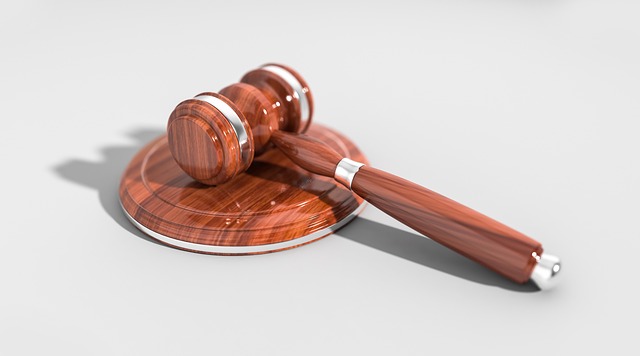Oregon's child welfare system, overseen by the Department of Human Services (DHS), follows a strict legal framework to ensure child safety. An Oregon child welfare attorney is indispensable for parents navigating this complex process, as they guide through DHS child welfare laws and Oregon-specific guidelines. These experts advocate for parental rights, interpret regulations, and ensure fair treatment in investigations, court proceedings, and custody decisions. The DHS legal guide outlines procedures from initial involvement to adoption, empowering parents to actively participate while safeguarding their bonds with their children.
“Navigating the intricate web of Oregon’s child welfare system can be daunting for parents. This comprehensive guide aims to demystify the process, empowering you with knowledge. We explore critical aspects, including understanding the Oregon Child Welfare System, the vital role of an Oregon child welfare attorney in safeguarding parental rights, and a deep dive into DHS child welfare law. Additionally, we present a detailed Oregon Child Welfare Legal Guide, outlining essential procedures and key guidelines from DHS, offering a roadmap for families navigating these legal complexities.”
- Understanding Oregon's Child Welfare System: An Overview for Parents
- The Role of an Oregon Child Welfare Attorney: Protecting Your Parental Rights
- DHS Child Welfare Law and Its Impact on Families in Oregon
- A Comprehensive Oregon Child Welfare Legal Guide: Procedures and Key Guidelines from DHS
Understanding Oregon's Child Welfare System: An Overview for Parents

Understanding Oregon’s Child Welfare System: An Overview for Parents
Oregon’s child welfare system is governed by the Department of Human Services (DHS), which is tasked with ensuring the safety, health, and well-being of children in the state. The DHS child welfare law outlines procedures for investigations, interventions, and services provided to families facing challenges related to child abuse or neglect. If you’re a parent in Oregon, it’s crucial to know your parental rights and understand the legal processes that may come into play if concerns are raised about your child’s safety. An Oregon child welfare attorney can serve as a valuable guide, helping you navigate the complex DHS guidelines and ensuring your rights are protected throughout the process.
The Oregon child welfare legal guide emphasizes transparency and collaboration between families and the DHS. Legal procedures are designed to support families in meeting their children’s needs while also providing necessary interventions when risks are identified. Parents have the right to be informed about any investigations, to participate in case planning, and to challenge any decisions made regarding their child’s custody or placement. By familiarizing themselves with these rights and procedures, parents can actively engage in the process and ensure the best outcome for their family.
The Role of an Oregon Child Welfare Attorney: Protecting Your Parental Rights

An Oregon Child Welfare Attorney plays a pivotal role in protecting your parental rights within the complex landscape of Oregon’s child welfare system. These legal professionals are well-versed in navigating DHS child welfare laws and Oregon child welfare guidelines, ensuring that your family’s interests are defended throughout every stage of the process. They provide crucial support by explaining intricate legal procedures and helping you understand your rights and responsibilities under the law.
With expertise in interpreting Oregon DHS regulations, an attorney can guide you through investigations, court proceedings, and potential removal or adoption cases. Their knowledge of the Oregon child welfare legal guide enables them to advocate for fair treatment, challenge unjustified actions, and ensure that your parental bond remains intact. By entrusting a qualified Oregon child welfare attorney with your case, you gain a powerful ally in safeguarding your parental rights and fighting for the best outcome possible for your family.
DHS Child Welfare Law and Its Impact on Families in Oregon

In Oregon, the Department of Human Services (DHS) is tasked with ensuring the safety and well-being of children through its child welfare division. The DHS Child Welfare Law forms the cornerstone of the state’s approach to protecting vulnerable youth. This legislation encompasses a comprehensive set of rules and regulations designed to guide the process of removing children from their homes when faced with potential harm or abuse. For families involved in Oregon child welfare proceedings, understanding this law is crucial. An Oregon child welfare attorney can serve as a valuable ally, navigating the complex legal landscape and advocating for the best interests of affected individuals.
The DHS child welfare law in Oregon outlines specific procedures that must be followed when initiating and progressing child welfare cases. It establishes guidelines for investigations, court interventions, and long-term care planning. Parental rights are carefully considered within this framework, ensuring fair treatment and due process throughout the legal proceedings. The law also provides a legal guide for Oregon DHS, offering clarity on when and how to intervene, which can significantly impact the lives of families caught in the child welfare system.
A Comprehensive Oregon Child Welfare Legal Guide: Procedures and Key Guidelines from DHS

In Oregon, navigating the intricate web of child welfare laws can be a complex task for parents and guardians, often requiring the expertise of an Oregon child welfare attorney. The Department of Human Services (DHS) plays a pivotal role in ensuring the safety and well-being of children within the state, overseeing critical decisions regarding foster care, adoption, and termination of parental rights. As such, DHS has compiled a comprehensive Oregon child welfare legal guide, offering detailed procedures and key guidelines to all involved parties.
This essential resource provides a roadmap for understanding parental rights in Oregon, outlining the legal steps and criteria for various child welfare proceedings. From initial involvement with DHS to subsequent court processes, the guide offers clarity on critical issues like removal of children from the home, placement decisions, and the right to legal representation. By familiarizing themselves with these procedures and guidelines, parents can actively participate in the process, ensuring their rights are protected while striving for the best outcomes for their children.






